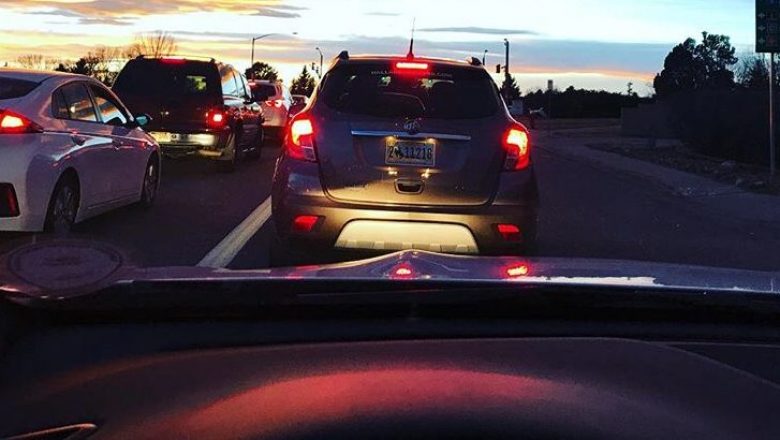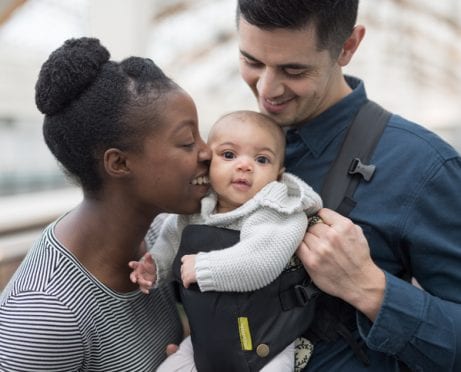
Rita Pouppirt
Choosing to lease or buy a car is a major financial decision that will likely affect at least the next three years of your life. Unless you’ve taken the time to dissect the differences between the two options, you might not have a clue which is better for you. Here’s how they work.
How to Buy a Car Using a Loan
Buying a car with a loan is pretty straightforward. You investigate which car you want, negotiate a price with the dealership, then purchase the car. You can pay cash; secure a car loan before you head to the dealership to keep your financing options open; or rely on the financing options the car dealership offers.
Many dealerships will finance the full cost of a car. That said, putting a payment down against the purchase price can help you secure a lower monthly payment. It will also help you pay less in interest over the life of the loan.
Before you head to the dealership, be prepared to answer the typical questions on a loan application. These might include your income, debts, and personal identification information. You should also bring a W-2 or a couple of recent pay stubs so the dealership can verify your income.
In general, the better your credit score, the lower the interest rate on your loan will be.
However, some dealers mark up the interest rates on car loans to earn a larger profit.
So it’s important to know what interest rate you could get from a bank or credit union before you go car shopping.
When you leave the dealership, you own the car. However, the lender has a lien on it, since you owe money to the company. You’ll make monthly loan payments for as long as your agreement requires, similar to the payments you’d make on a student loan. In most cases, you can make extra principal payments to speed up the repayment process if you wish.
After you fully pay off your loan, you own the car and can keep it as long as you wish. Eventually, you’ll either sell it or trade it in to a dealership.
How to Lease a Car
Leasing a car is somewhat like buying a car upfront, but you’ll encounter a few differences. First, you never own the car. Instead, you essentially negotiate to rent a car. The length of a lease can vary, but typically lasts about three years. You can lease for shorter or longer periods, depending on what a dealership offers.
Instead of negotiating the car price, you’ll negotiate the amount of value the car will lose over the term of the lease, called depreciation. For instance, if you pick a typical three-year car lease, you would negotiate the value the car would drop over the next three years.
In a lease contract, the fancy name for depreciation is capitalized cost. You can negotiate this similar to negotiating the price of a car you would buy. You might also be able to negotiate the money factor, which is like an interest rate, as well as any fees you’ll be charged.
Since you’re renting the car, you won’t be able to drive it as much as you want because that would affect its value when you return it. Instead, try to negotiate how many miles you can drive per year and the cost per additional mile driven if you exceed your mileage allowance.
Lease mileage limits are typically 10,000 to 15,000 miles per year and mileage overages will typically cost 20 to 25 cents per mile. However, you can negotiate these items as part of your lease, as well. You should expect a higher monthly payment if you want to drive more miles or have a lower mileage penalty.
Since you don’t own the car, you may have to pay a security deposit that you can get back if you return the car in an acceptable condition. That said, if the car is returned with extraordinary damage or wear and tear, the amount may be deducted from your security deposit.
Similarly, if you end your lease early, you’ll likely have to pay an early termination fee. You’ll probably have to pay for gap insurance, too, as the value of the car may be less than the amount you owe on the remainder of the lease if you get in an accident and the car is totaled.
Leasing may have a tax advantage, as well. Many states charge sales tax only on the amount that the car depreciates, rather than the price of the car, which could save you a good bit of money.
At the end of the lease, you can either return the car or pay the preset price in your lease contract to purchase the vehicle.
When Buying Might Be Better
Buying a car is typically better when you’re looking to lower your total cost of ownership by owning a car for an extended period.
First, you can save by buying a used car. In this case, someone else has already paid for the major depreciation that almost every new car experiences in the first few years of its life. But even if you buy a new car, you own it. So you can keep it for as long as you want.
No matter what type of car you buy, you own the car after you pay off the loan.
You can continue driving it without making a monthly payment. This is a huge benefit compared to leasing where you’ll always have a payment. Cars last longer than ever now and can easily make it to 100,000 miles and beyond without any major repairs
When you purchase a car, you don’t have to worry about mileage caps and can use the car for whatever you want, including rideshare driving. While driving more miles will decrease the value of your car, you won’t have to pay an extra fee for doing so.
You’ll also be able to customize your car however you wish. Plus, you don’t have to worry about excessive wear or damage. This, too, will decrease the value of your car. But if you plan to drive it into the ground, it doesn’t matter the way it would with a lease.
Whether you want to modify your ride or you simply need to do repairs, AutoAnything can help you find what you need.
When Leasing Might Be Better
For some people, leasing a car will be a better deal. Craig Getchell, director of business consulting for Molex, is one of those people. He loves the no-hassle lifestyle of leasing cars, as he doesn’t drive enough to exceed the mileage caps.
“The car is warrantied the entire time of the lease,” says Getchell.
Since leases are typically three years or less, repairs will be covered under warranty if anything goes wrong. Once your lease expires, you can lease a new car with another warranty to continue the hassle-free lifestyle.
While Getchell regularly travels for work, most of his travel is by plane, which doesn’t affect his car lease negatively. When he travels locally for work, he drives his car and collects reimbursement for the miles driven. This helps him cover his monthly lease payment.
If a trip will be more than 100 miles, his company provides him with a rental car, which helps him stay under the mileage limits that come with leases.
You might also want to lease if you’re the type of person who always has to have the latest model of car. Leases typically have lower monthly payments than taking out a loan on the same car. However, you need to factor in the total cost of the lease, including any upfront and back-end fees, to make sure that you’re comparing apples to apples in deciding whether to lease or buy a car.
So Should You Lease or Buy a Car?
In the end, deciding to lease or buy a car comes down to lifestyle choices and whether you’re willing to own a car for an extended period to save money.
Leasing could result in lower monthly payments and a hassle-free lifestyle. That said, you’ll always be stuck with a monthly payment, since you'll never own a car.
If you purchase a car and drive it for 10 years or until it's no longer mechanically sound, you’ll likely save quite a bit of money compared to leasing. That said, you give up convenience and predictability as your car ages and needs occasional repairs.
Personally, I can’t imagine ever leasing a car. At the same time, Getchell likely wouldn’t ever consider buying one. Now that you know the differences between buying and leasing, you can choose which is best for you.










